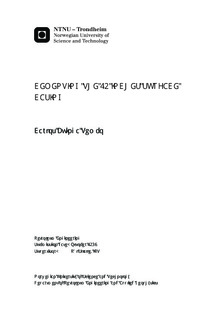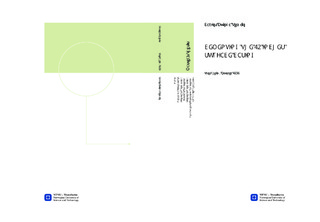| dc.description.abstract | The placement of cement in annulus behind the casing is a important operation in an oil well s life. To ensure zonal isolation, the fluid in place in the annulus has to be completely displaced by the slurry. Poor excess volume calculations and displacements in deepwater surface casing may compromise the integrity of the well since the surface casing provides structural support of the subsea BOP. In a weak or depleted formation, conventional cement is not a solution because the bottomhole circulating pressure (BHCP), (not necessary at bottom) may exceed the rock strength, open fractures in the rock, and portion of the cement is lost to the formation. Therefore, to avoid losing cement to the formation, the cement slurry density must be reduced to a level where the hydrostatic pressure and the frictional forces are less than that of the fracture gradient. This can be done in three ways: The addition of water (water extended), the addition of nitrogen (foam), or addition of lightweight microspheres (LMS). All these slurry density reduction methods will result in lightweight cement which could sometimes provide the best overall solution.
Water-extended cement: Simply adding extra water (and necessary water-extending additives that will tie-up the extra water) to cement slurry can reduce the density sufficiently to allow the cement slurry to be safely circulated and the desired top of cement (TOC) reached (preferably seabed)
The primary advantage of this class of slurry is economics. Typically only a small amount s of water- extending material are required to tie up large amounts of water. Thus, the real benefit of these systems, in addition to the decrease in density, is the increase in the slurry yield per sack. As more water is added, less cement (and associated additives) needs to be used.
However, as additional water is added above the standard «four to six gallons» per sack, the cement becomes more diluted, compressive strength declines, and permeability increases. As the density decrease approaches 10,5 to 11 ppg ( pound per gallon), the dilution effect becomes so great and compressive strength development so slow to the point, it may no longer be a good annular sealant.
To avoid several problems such as non returns of cement to the surface encountered by Maersk Oil Angola in Chissonga Project, the use of foam cement is appropriate. With injection of nitrogen, the volume increases and the cement slurry density is adjusted easily. | |

